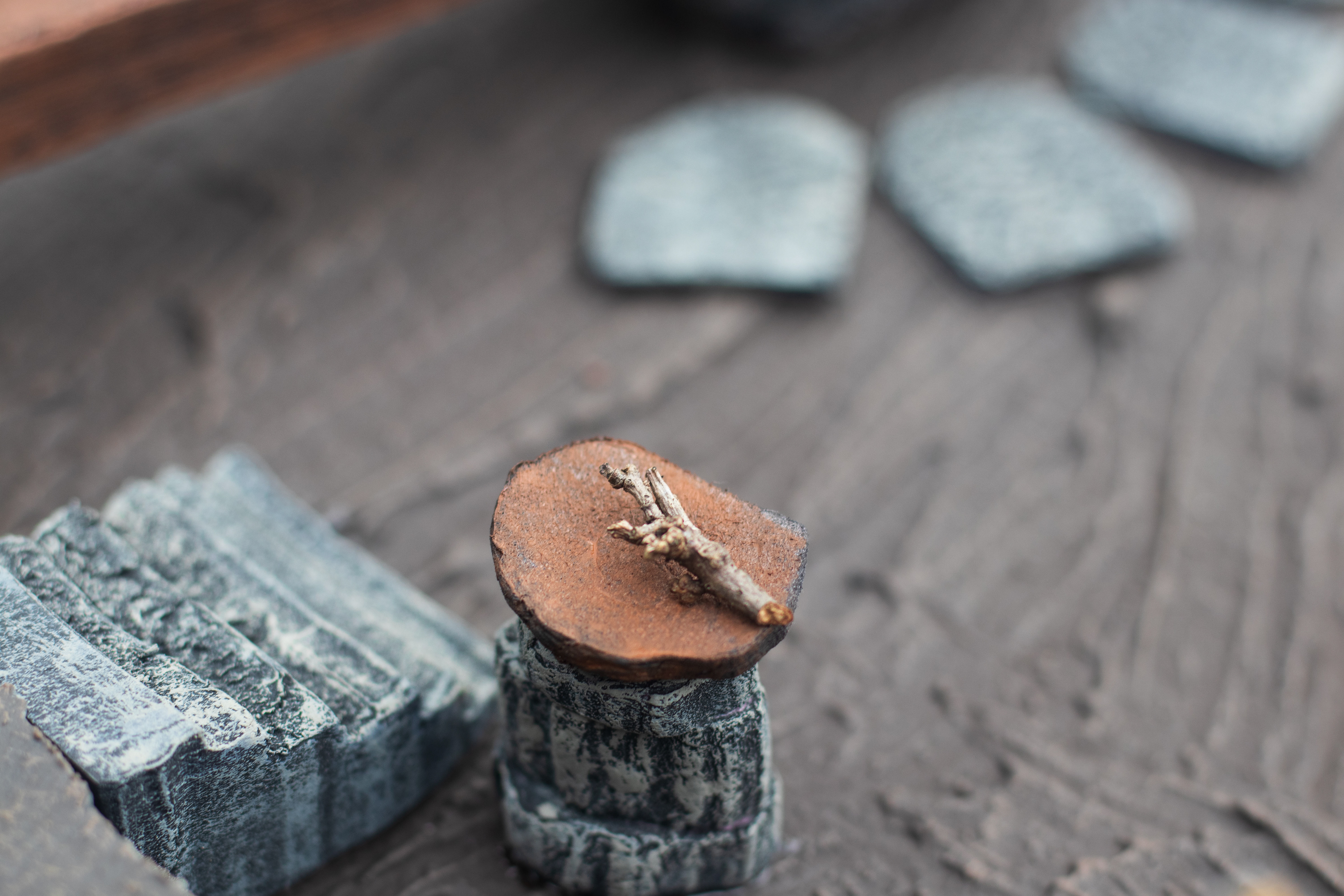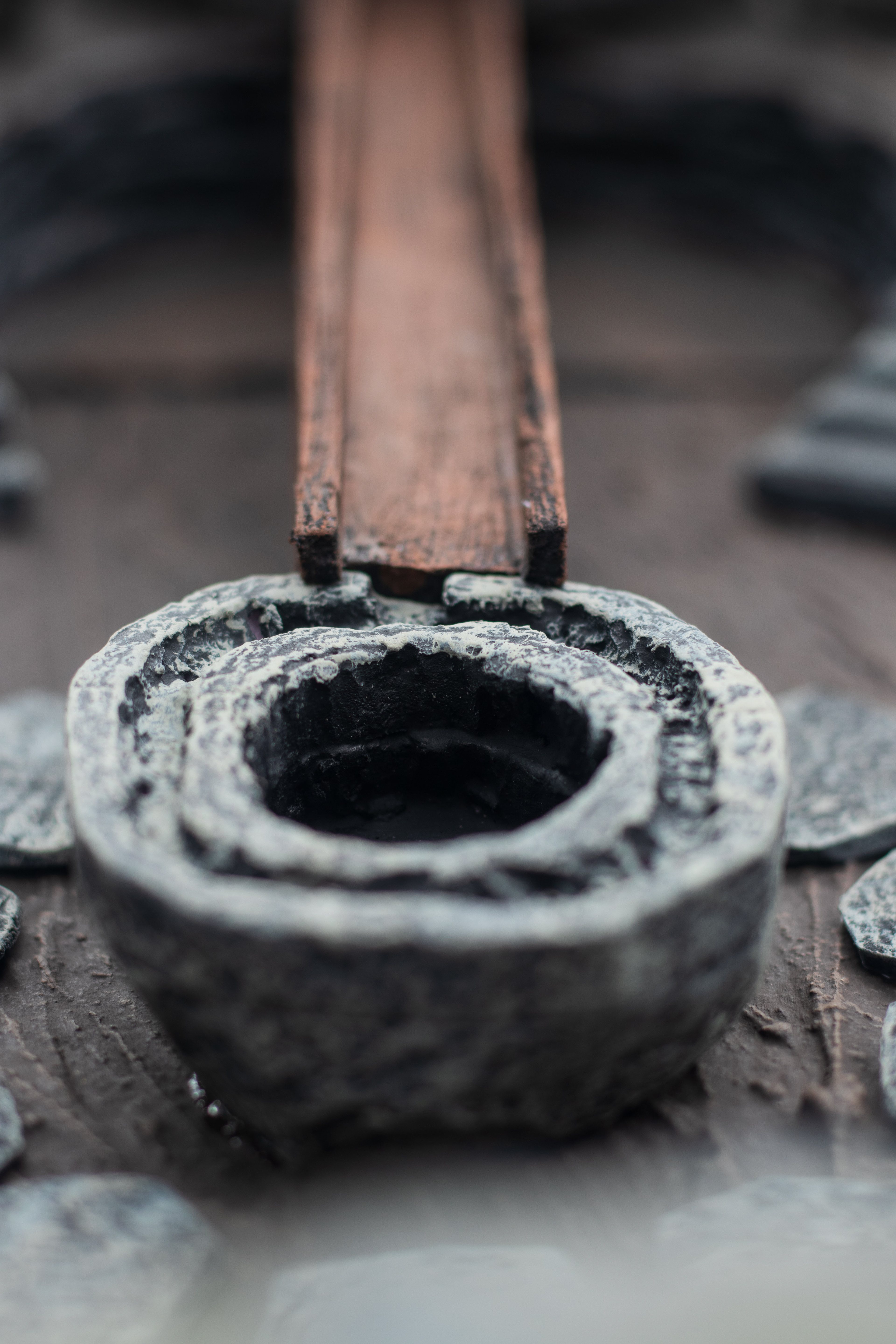This project’s guidelines were to create a sacred space for an existing religion, active or ancient, without any of the pre-existing iconography or architecture.
I created a sacred space to worship the Old Norse God Týr. This space is not only a place of worship, but also a community center where feasts, festivals, judicial trials, and combat challenges take place. Sticking to the tradition of the existing religion, this place of worship is in the open air, near large natural elements, and located in a forest clearing to separate worshipers from their everyday life.
Týr is best known for his sense of justice, bravery, and the sacrifice of his hand to the wolf Fenrir, in the gods’ attempt to imprison the wolf. This story is the basis for the theming of my sacred space.
I created a scale model of the space using mainly xps foam, which I cut and carved into the ground plane, stonework, and trees. The ground texture was achieved using a mixture of plaster, paint, sand, and mod podge.
Overview of the model
First you enter through the stacked stone archway.
The arch serves as a distinguishing feature that separates itself from the rest of the forest not only for sightline reasons but for the worshippers too, as a way to mentally prepare themselves for this dedicated place.
Main gathering level
On the first level is the main stone cauldron or fireplace. Here is where important people will gather and stand on the surrounding nine stones.
This is a place to sacrifice belongings, usually defunct weapons, or carved totems/statues to the gods by burning them.
Around the cauldron is a moat for the sacrificial blood pool so it may be spread to the land and to the people. This is done by the smearing and painting of bodies or by taking sticks, dipping them, and throwing/shaking the blood off onto the surrounding land and people.


Altar
The altar is carved stone to represent Týr’s lost hand. Surrounding the altar are stacked stones that represent the wolf Fenrir’s teeth. This second level depicts Týr’s story and the values that his followers strive to maintain in their daily lives and on the battlefield.
Altar Sacrifice
Spilling over the top of the fist and down the fingers, the sacrificial blood flows to the bottom of the altar and through the trough, down to the main cauldron on the first level.
This represents Týr’s good will to those who worship him and sacrifice in his name. The good will is then spread throughout the people and the land by the painting of bodies and the shaking of blood, etc.
Top down view of entire layout
Hanging Stations
Another form of sacrifice to the gods is animal and human. After being sacrificed on the altar, they are then hung on the stations, typically by their ankles.
Hanging Stations: Another form of sacrifice to the gods is animal and human. After being sacrificed on the altar, they are then hung on the stations, typically by their ankles.